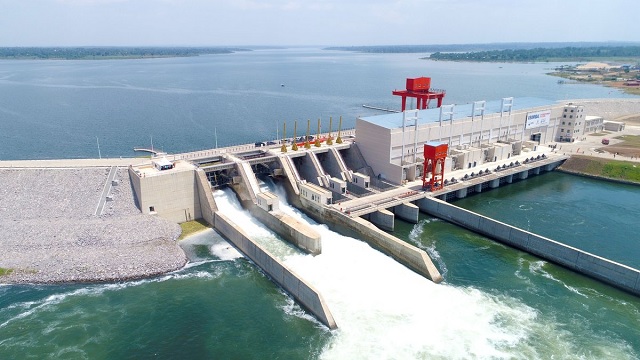
The energy minister says nobody will be punished until investigations are concluded
| THE INDEPENDENT | The abrupt shutdown of the 183MW Isimba hydropower plant on Aug.08 continues to cause anxiety amongst Ugandans, with many urging authorities to penalize those that caused the error.
However, speaking as the main guest via twitter spaces on Aug.18, Ruth Nankabirwa, the minister of energy and mineral development said, “there is no punishment; error is to human; let us wait for investigations to be concluded.”
This edition of twitter spaces, attended by slightly over 250 people from different sectors, was hosted by Robert Kabushenga, an entrepreneur and ex-chief executive officer of New Vision Printing and Publishing Company Limited.
Kabushenga asked the minister: why don’t we punish the person who opened the gate and forgot to close it? Nankabirwa said; “Robert, let’s wait for the investigations; I believe in teamwork; the problem will be solved.”
She added, “Since I joined the ministry a lot has changed including management changes at Uganda Electricity Transmission Company Limited…the sector is doing well and we will achieve much more.”
Media reports indicate that Isimba Hydropower was shut down as a result of flooding, after the Uganda Electricity Generation Company (UEGCL) engineer opened the radial outflow gates instead of the inflow gates, causing water to spurt inside the powerhouse to near submersion.
But, while appearing before Parliament on Aug.18, Nankabirwa seemed to defend UEGCL.
Nankabirwa told the MPs that the plant flooded because of maintenance works.
She said: “One of the generating units was out of use to allow the contractor to undertake routine maintenance. At the time of the incident, the scheduled works included installation and testing of equipment supplied by the contractor for safe access to the powerhouse.”
She added that as the operations and maintenance team at the UEGCL was attempting to create a safe working environment within the powerhouse working area, a malfunction occurred, causing flow of water into the powerhouse.
In the process, she said, dam safety procedures were automatically triggered to ensure the safety of staff, protection of equipment and production and prevention of potential dam failure.
She reassured MPs that appropriate measures were being undertaken to restore power production within three weeks.
“In these three weeks, we have decided to use the manual mode; the plant has two systems, automated and manual. Within three weeks, we will begin the generation but not in full capacity, full capacity will start in six weeks,” she said.
The Minister also clarified that the country’s installed power generation capacity is 1378.1 megawatts, which indicates excess generation relative to the country’s peak system demand of 900MW, including 50MW of power export to Kenya.
The minister said, other power projects are coming onboard including among others, the Ayago hydropower dam (840MW), and Karuma dam (600MW), “and so the future is bright.” She said, three turbines for the Karuma dam amounting to 300MW will be switched on at the end of the year.
Isimba is a run-of-river type dam. It harvests energy from flowing water from the adjoining 170 millimeters reservoir to produce electricity.
The dam is located at the parallels of Kayunga and Kamuli districts, and was commissioned in March 2019. It has four Kaplan axial flow turbine generators that were submerged, each with a capacity of 45.8 Megawatts.
Meanwhile, the Chief Opposition Whip in Parliament, John Baptist Nambeshe, who is also a MP from Manjiya County in Bududa district said, the incident puts serious questions on the structural integrity of the dam.
“An investigation must be instituted to find out what has happened because this speaks volumes about work which could have been shoddy or compromised,” he said.
Isimba dam cost $567.7million (Shs2.1trillion) with China’s EXIM bank contributing the largest part of the funds (85%) whereas the Uganda government contributed 15%.
****
 The Independent Uganda: You get the Truth we Pay the Price
The Independent Uganda: You get the Truth we Pay the Price


